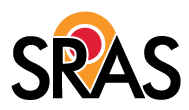Survey of Pre-College Enrollments in Russian Language Classes, 2020
Table of Contents
I. Background
This survey was first conducted by CCPCR, The Committee on College and Pre-College Russian. The committee was created in 1984 as a result of the Report of the National Committee for Russian Language Study (1983), which itself followed a report of the Carter administration’s Presidential Commission on Foreign Language and International Studies (1979). Noting (in 1983) that “enrollments in the Russian language have dropped more precipitously than those in any other major modern language,” the Committee for Russian Language Study, composed of representatives of AAASS, AATSEEL, and ACTR, made 12 recommendations in the Report, among which was an initiative to strengthen pre-college Russian programs and establish a survey of pre-college Russian teaching.
In 2002, CCPCR added an annual fall survey of college/university-level Russian enrollments at the 1st and 2nd year levels. This survey was coordinated from 2002-2018 by John Schillinger, now Emeritus Professor of Russian from American University in Washington, D.C. In 2018, Professor Schillinger retired from heading the survey and SRAS, an organization specialized in study abroad to Eurasia and promoting and supporting the study of Eurasia in North America, took over. Find out more about SRAS and our varied projects.
Since 2018 SRAS has, in conference with several Russian teachers, sought to make the survey even richer and more informative. The survey was moved to a larger, electronic questionnaire to allow for extended analysis and the creation of graphics. Additional questions were added based on interests teachers expressed in focus groups conducted by SRAS.
If you are interested in supporting Russian language study at the pre-college or college level or wish to connect with SRAS, either to add information about your program, ask questions, or make recommendations for our projects, please contact us.
II. Notes
Data for 2018-2020, the first data for pre-college Russian gathered by SRAS, were collected within a single survey, which was open from October to December of 2020. We plan to shift to a more regular schedule of asking for data yearly in the last half of the fall semester beginning in 2021.
While we had hoped to add this year’s new survey information to that gathered by CCPCR from 1996-2013, we were unable to do so. The previous data was corrupted, in part, due to errors made in a previous server migration. SRAS has been unable to effectively use it here. Thus, this report begins with 2018.
Our survey was distributed via the listserve SEELANGS, the SRAS newsletter, and mailings coordinated with the American Council on Teaching Foreign Languages (ACTFL) to their members. The ACTFL has been an invaluable help to this survey effort.
A total of 64 valid responses to the 2020 survey were received. Responses deemed invalid were duplicate submissions counting the same students in a single program. These duplicates were received from multiple teachers or administrators from a single school or district. When identified, the most accurate numbers were discerned in conference with all respondents.
Of those 64, four indicated that their programs had been cut before 2018 and thus they had actually had no program or students to report. However, of the remaining 60 active programs represented, two specifically reported being entirely new as of 2020.
This survey does not represent a complete census of the pre-college field. The mailing list for the ACTFL identifies 101 different institutions. A larger survey, conducted in 2017 by the American Councils for International Education in conjunction with numerous professional organizations and support from the US government, identified 147 individual high school programs.
Thus, our survey has managed to contact a smaller number of programs than likely currently exist. However, the institutional diversity and geographic range of these programs is great and we believe our results can still be considered representative of the field. We hope as well that respondent numbers will grow as the survey becomes a regular and, hopefully, more widely known event each year.
III. Overall Enrollment and Program Growth
With some movement within the grade categories, and a small dip in 2019, total reported enrollment numbers have remained at around 5000 total students for all three years.
The overall numbers, however, don’t tell the whole story. Five programs reported numbers only for 2020 (new programs or new teachers that didn’t have access to historical data). Together, these programs added nearly 300 students to the total, masking a widespread drop in individual program enrollments.
To track trends in enrollment, we can calculate year-on-year growth for any program reporting for two consecutive years. A majority of such programs reporting for 2019 and 2020 have reported negative growth, with 25% of all active programs reporting significant declines of more than 20%. Overall average growth went from 8% in 2019 to -10% in 2020.
IV. State-by-State Breakdown
About half (23) of all US states are represented in this survey. However, the survey is dominated by a few of them. Most of these states have individual large programs. It is also interesting to point out that most of these states have significant populations of Russian speakers.
New York accounts for about a quarter of reported enrollments. Another half are distributed among six states: Illinois, Virginia, New Jersey, Alaska, Oregon, and Maryland.
V. Heritage Speakers
VI. Grade Breakdowns
Most reporting programs (55) reported having a highschool program. Fewer (18) reported middle school programs and fewer still (10) reported grade school programs.
Of the 10 grade school programs reported, three reported zero enrollments for 2020. Two were extracurricular programs that were apparently cancelled for the year. One was part of a revived program that was waiting for new enrollments.
This means that the substantial enrollment population of 937 students for 2020 were packed into just seven programs, with three programs accounting for 71% of that population. Thus, we can say that grade school programs tend to be hosted in specialized schools in which language immersion is given high priority. All three of those large programs also offer three or more other languages besides Russian.
Middle school and high school programs also have a range of program sizes, but none are quite so concentrated as the grade school numbers.
VII. Requirements and Levels
VIII. Types of Instruction
A range of program instruction is offered. Many programs reported offering online or hybrid instruction in response to COVID-related restrictions in 2020 and seeing this as a temporary solution. Thus, these numbers may radically change as the pandemic subsides and face-to-face styles of instruction become more practical again.
Respondents could select multiple options to reflect all styles used across their programs. Thus, the total below is larger than the overall number of programs reporting.
IX. Partnerships and Curriculums
X. Other Languages Offered
X. Faculty
The 64 reporting schools reported a total of 82 full time and 53 part time Russian teachers. Most commonly, programs are staffed by a single full time or a single full time and single part time teacher.
Averages work out to a total of 1.4 full time faculty and 0.9 part time per program although larger programs report as many as 13 full time teachers or as many 26 part time in a single program.
XI. Data Set
Anyone interested in seeing individual program numbers, program growth calculations, and/or raw data for majors and minors, can do so by accessing this Googlesheet. The original questionaire is archived here.
Surveys for additional years can be found here.
"The SRAS guides were excellent! They really knew their stuff and were able to relate the history of the places we visited in an interesting and inventive way. It was obvious they had a lot of experience working with American students."
- Charles Arndt III, Union College
"Thanks again to (SRAS Assistant Director) Josh Wilson for being so helpful with getting us started! At our concluding discussion class yesterday I asked the students to write and then present five "Kliuchevykh slov" about their experience. Several of them wound up referencing Josh's comments about trying to observe without judging, which he made during the Moscow Walking Tour. Thanks for helping me teach this course!"
- Jane Costlow, Bates College
"We had a great time overall. The students were super impressed with SRAS -- the guides, the accommodations, the excursions, etc. The guides were super knowledgeable and kind--the only thing that would improve the tours is volume. They tend to speak quietly so a few people who can't hear lose interest. But we loved the Hermitage art project and Novgorod, and the bunker, and going behind the fountains at Peterhof, and the boat to Peterhof... We loved everything!"
- Ona Renner-Fahey, University of Montana
"My Dear Renee, I am still in Kazakhstan but can report back we had a perfectly splendid time in Kyrgyzstan. The students and I want to collectively buy a little plot of land and a yurt or house in the village at the base of the mountains. They loved their families and I fell in love with Kenzhe, we want to include her in our documentary. I will be in touch over the next two weeks. Forever grateful to you."
- Jane Knox-Voina, Bowdoin College
"A long overdue thank you for the wonderful trip you and your staff planned for the Drew group in St. Petersburg. I have never had a trip where NOTHING went wrong. It was a terrific experience from start to finish, your staff was superb and St. Petersburg Economics University was a marvelous host. We enjoyed each and every lecture and guide, and the many fine added touches. I would love to do this again."
- Dr. Carol R. Ueland, Drew University

